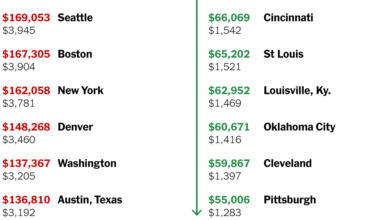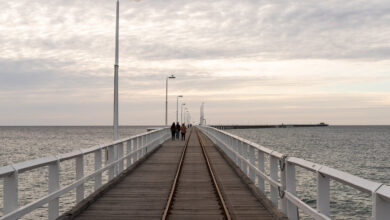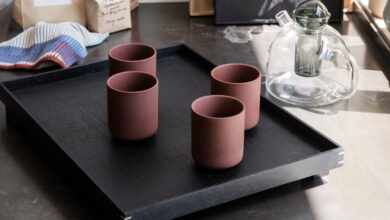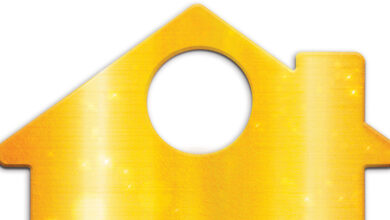Golf Homes Where You Play Inside
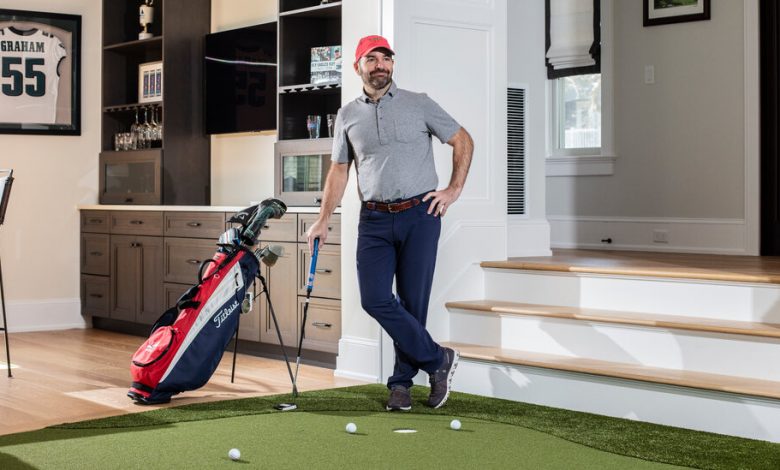
[ad_1]
The outside of the 2,000-square-foot building next to David Orlofsky’s home in Spring Lake, N.J., doesn’t seem unusual. The building’s exterior matches his residence next door, a six-bedroom house with 4,600 square feet of living space.
But step inside and its interior is startling. The entire space is given over to his favorite hobby — golf. There’s a TrackMan simulator as well as a four-hole physical putting green, complete with artificial turf. Mr. Orlofsky added a bar in the style of many a 19th hole, and a bathroom complete with a urinal. His sole concessions to overnight guests are the two bedrooms tucked away upstairs, grudgingly incorporated into the blueprint.
“I don’t really want people coming there. This is my space,” he said by telephone, laughing. “I could spend days in here, my little oasis from everybody else. It’s my happy place.”
It’s an example of a new kind of golf home — not a greens-fronting mansion, but rather a house built expressly for indoor golf.
Dedicated golf fans have many more options now than just practicing on a putting machine in the bedroom or hallway. Those who can afford the costs have decamped from their kitchens, opting instead to build a stand-alone home where they can practice putting and driving indoors, whatever the weather or time of day.
Mr. Orlofsky said he did not intend to create a second golf-centered home when he bought property on the New Jersey shore in 2013. The 52-year-old consultant and his family normally live in Hoboken but spend extensive periods in Spring Lake; he and his wife, Danielle, had demolished the original Spring Lake home to build to their own specifications. It was only when a smaller, neighboring house came onto the market that an idea crystallized. Why not buy it, they thought, and level the structure? They could then merge the backyards to create a larger outdoor space while also constructing a convenient stand-alone building.
Mr. Orlofsky, who already spent long hours playing a simulator in his garage, resolved to use that new space as an oversize, golf-specific rec room. It was custom built with ceilings of around 12 feet to accommodate his simulator — much higher than the 8-10 feet typical in residential construction — but ideal for swinging golf clubs. He estimated that the entire project, including the building and the installation of the golf systems, cost $1.2 million, but he had not set a budget. “I wasn’t going to nickel and dime because I’m going to have this house for the rest of my life,” he said.
Todd Kaufman looks at the golf home he is building in much the same way. The 59-year-old moved from Southern California to a 5,300-square-foot home in the Clear Creek Tahoe development in Carson City, Nev., in March last year. “I wasn’t really that into golf until I got to the club here, and like a lot of people, got the golf bug,” he said by phone. “Man, it’s powerful.”
His newfound hobby prompted him to plan an addition to his property: a stand-alone 1,800-square-foot casita built primarily as a golfing hideaway. Mr. Kaufman said he planned to install a simulator, a bar and a lounge and would configure it as a guest cottage too at some point.
Mr. Kaufman said he budgeted around $1,000 per square foot for construction and expected the golf hideaway to be ready in about 14 months.
It is a deliberate upgrade from installing a simulator system in the garage or living room. “Out here, we have a half year of perfect weather, and the rest of the year, the course is under snow, and we can’t use it,” Mr. Kaufman said. “I really wanted a more posh, customized setting for the golf experience.”
Such projects are commonplace at real estate’s highest end, according to Angela Reynolds, an interior designer who is based in the golf-heavy town of Jupiter, Fla. She specializes in large projects for multimillion-dollar homes that take several years to finish.
The first such stand-alone golfing house Ms. Reynolds created was for Celine Dion’s estate, later sold, on Jupiter Island, which included a 13-bedroom, 11,000-square-foot house. The golf house was centered around a simulator but its aesthetic determinedly resisted country club chic. “We did this black epoxy floor, almost like a nightclub,” Ms. Reynolds recalled by phone. “You’re no longer talking about going to a man cave in the garage. This is next level.”
Clients might spend up to $1 million on such golf houses, Ms. Reynolds said, adding physical greens around their simulators from companies like Full Swing or PuttView. These playing mats shift and change their slope and undulation as needed, able to mimic various putting contours. “These amazing rooms where you can invite people over for a cocktail are the ultimate status symbol on the golf course,” she said. “Most people are doing these as a place for socialization, perhaps to go to after a dinner party, hang out and play a round. That’s the key element: you’re not going in alone, like getting on a Peloton.”
Not all golf homes, though, cost six figures or more to create. Carl Markestad, president and founder of Carl’s Place, a golf simulator firm based in Milton, Wis., said he regularly tackled such projects for several thousand dollars.
“We’re getting more and more requests for stand-alone sheds. You can go nuts and make it a whole man shed for all kinds of entertaining, or we can do it for $5,000 — a 20-by-15 foot shed that’s just for this is a pretty efficient way to do it,” he said by phone. “And that’s our bread and butter as a business.”
Carl’s Place will provide the design blueprint for a golf shed, as well as the technology; owners then hire a local contractor to execute its construction as directed by Mr. Markestad and his team. Prices for such simulators have dropped in recent years, mostly because of more-affordable screens, although supply-chain issues have affected costs recently. “If you could afford a home theater five years ago, you can do a golf sim now,” he said, “The vast majority of our customers are ordinary Americans.”
The growth of indoor golfing at home, and stand-alone shrines to the sport, has generated unexpected side effects. Simulator-based, indoor golf is emerging as a hobby, for instance. Michael Williamson co-founded Intown Golf Club, in the Buckhead neighborhood of Atlanta just over two years ago; his 13,000-square-foot facility has 10 TrackMan-equipped golf bays, a restaurant and a bar. He said he did not charge by the hour, but instead had adopted a club model, with monthly dues from $200 to $275. Affordability is key to its appeal, Mr. Williamson said, as is convenience: Players can avoid the five-hours-long rounds on standard greens and play any time of day or night.
“We’re really busy at lunch and at happy hour,” he said by phone. “Indoor golf is more accessible and less intimidating, especially if you’re learning to play. It can really help people get into it.”
He said he would open a second facility, in Charlotte, N.C., later this year, and was scouting sites in cities including Chicago, Nashville, and Scottsdale, Ariz.
But those with their own golf house won’t need to wait. Mr. Orlofsky, the consultant with his golf home on the New Jersey shore, treats the golf house like his own private country club.
“I don’t let too many people in there,” he said jokingly. “You think it’s hard to get into some golf clubs? You’re not getting into the Orlofsky man cave unless I let you in.”
[ad_2]
Source link


